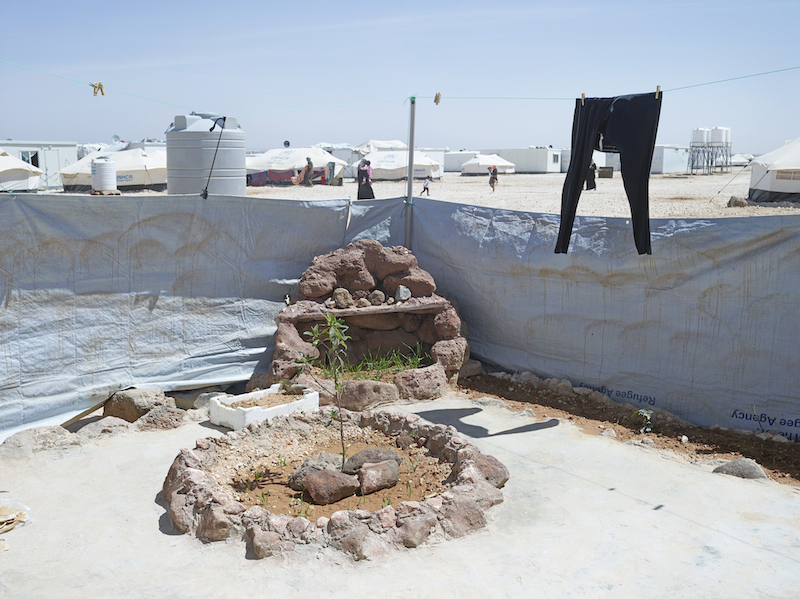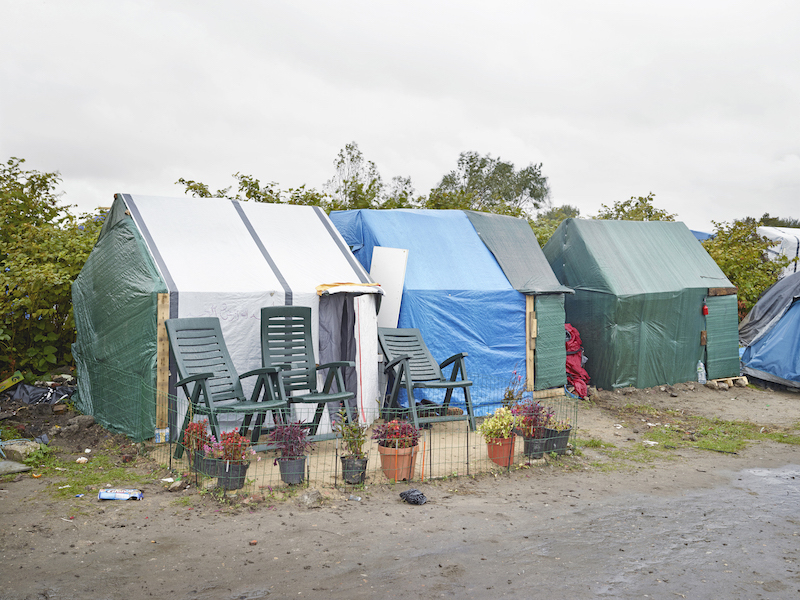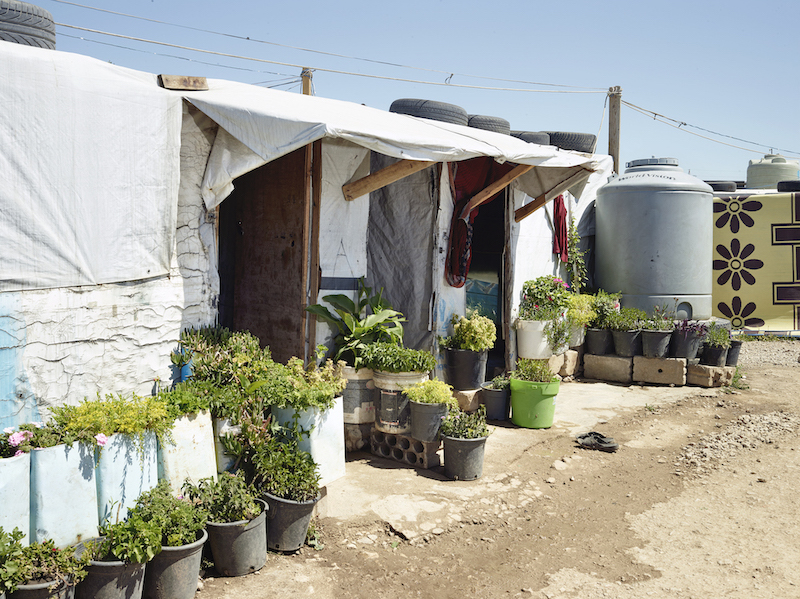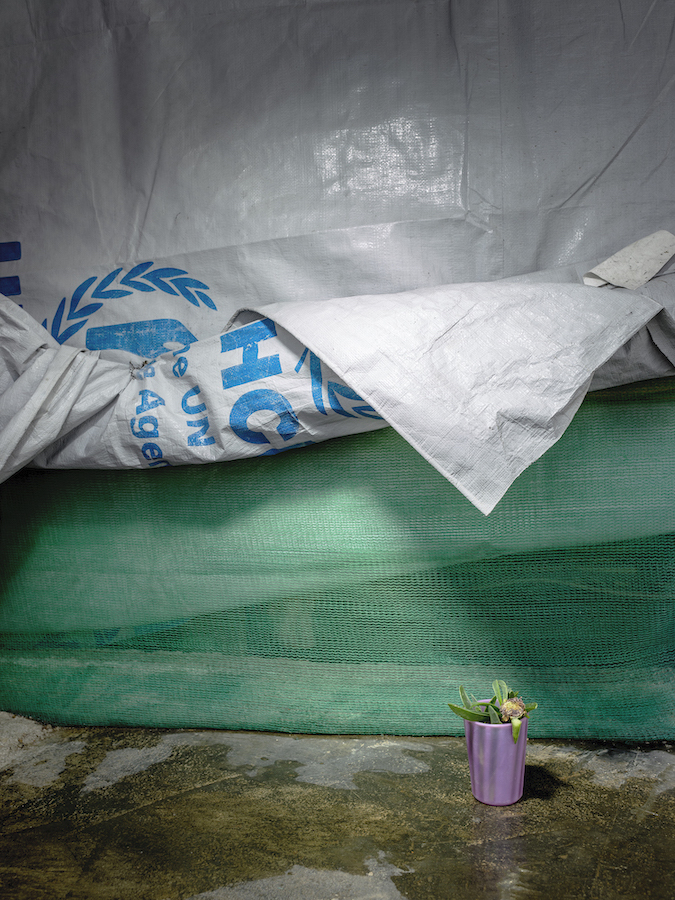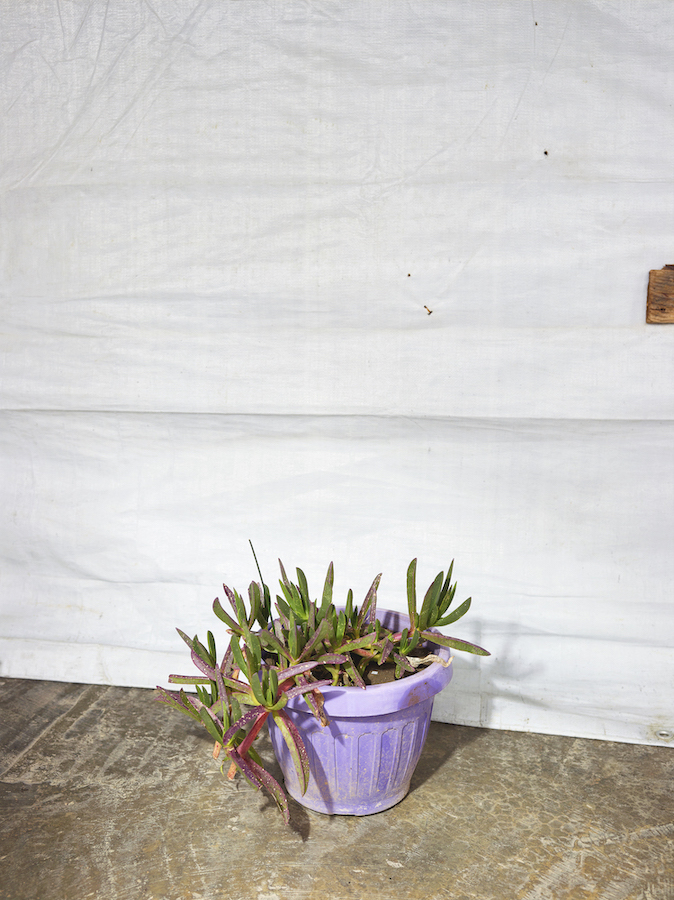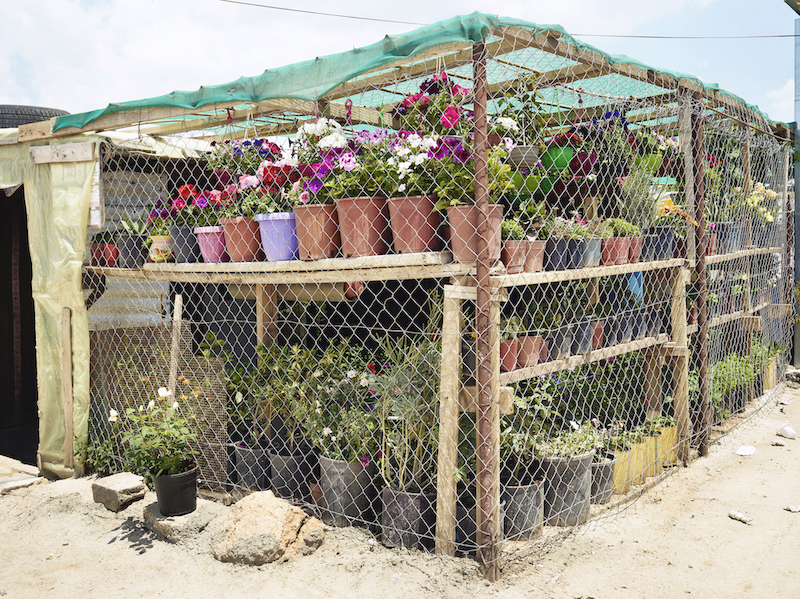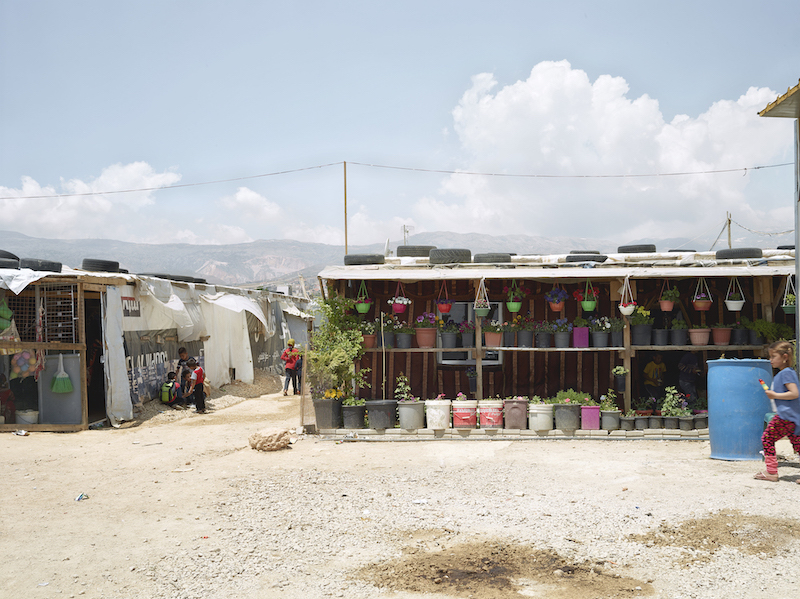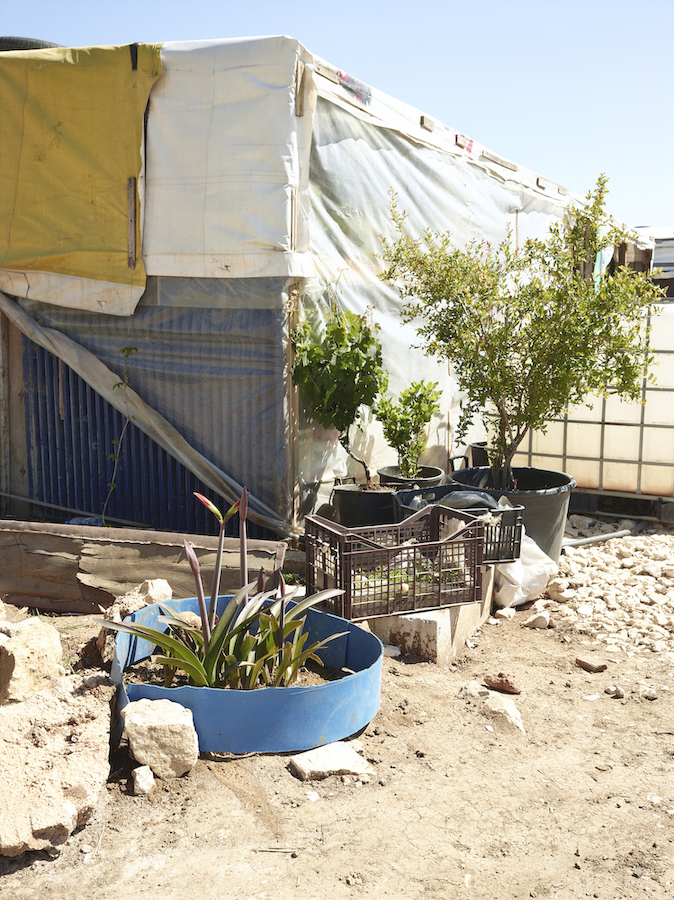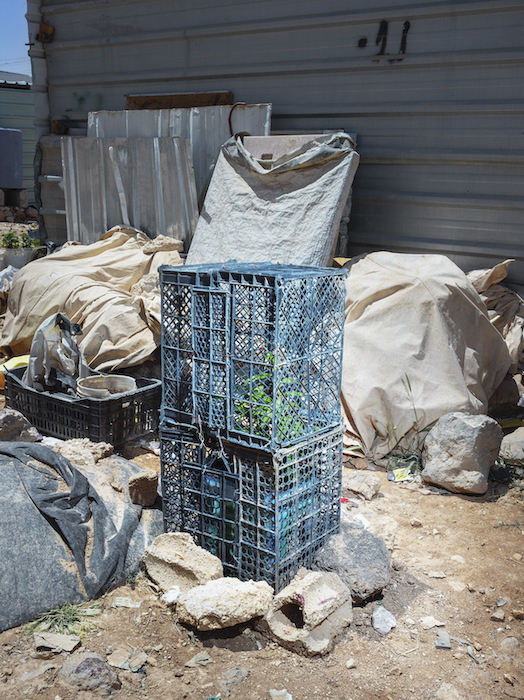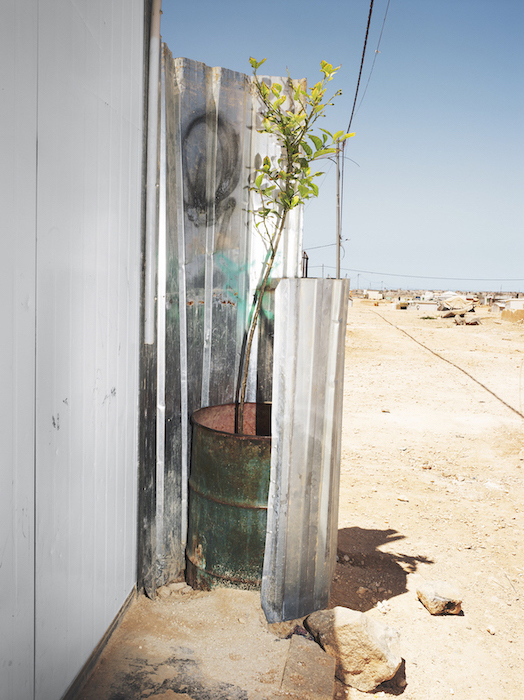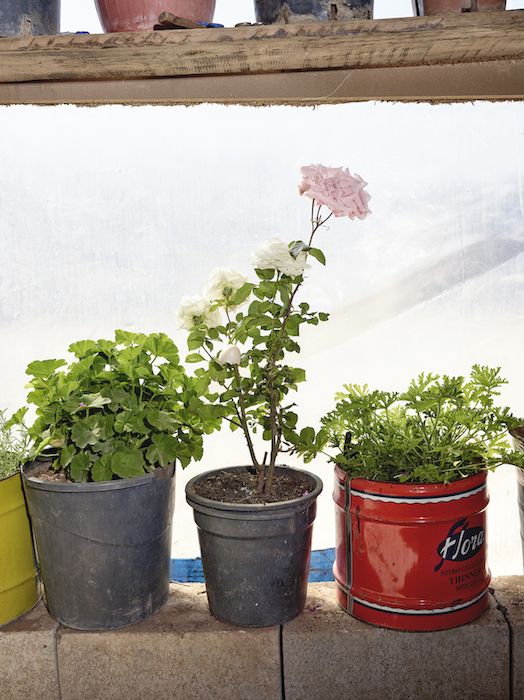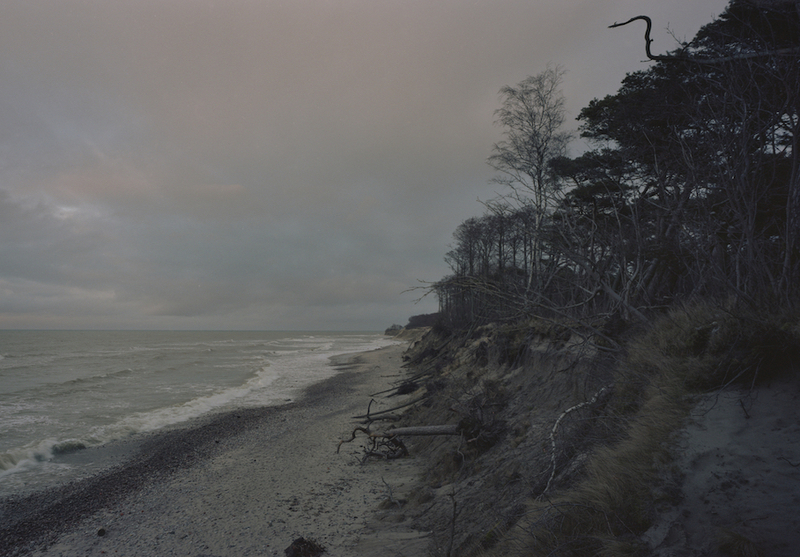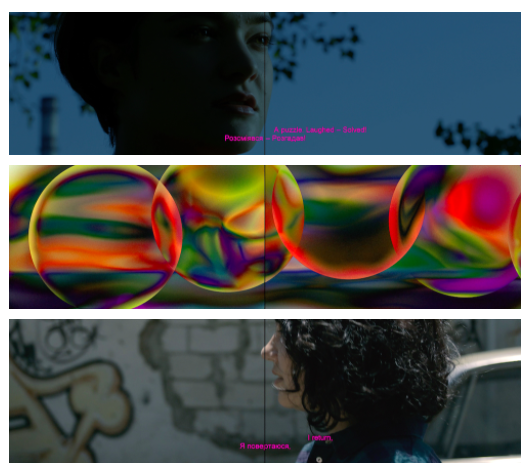CHOUCHA CAMP, TUNISIA — JULY 2011
CALAIS, FRANCE — JULY 2016
ZAATARI CAMP, JORDAN — APRIL 2014
EastEast features selected stories of everyday life in refugee camps from Henk Wildshut’s photobook Rooted (2019). It presents his nearly decade-long exploration of how precarious gardens grown by the displaced become expressions of resistance to bureaucratically imposed victimhood.
Update as of September 2, 2020: EastEast has received comments from philosopher and translator Diana Khamis, touching on several significant errors in the text of Henk Wildshut’s book, republished by our platform. In particular, the name Abu Hamzi should not be shortened to “Abu,” since “Abu Hamzi” literally translates as “the father of Hamzi”—respectively, this name cannot be split into two parts. The text also mentions “the desert sands of the Bekaa valley”: the Beqaa (or Bekaa) Valley is known as the most fertile land of Lebanon with abundant groundwaters, with no sand whatsoever in the area. “The stereotype that Arab countries are all desert is so strong and so ignominious in Lebanon...” wrote Diana. We are extremely grateful for this feedback and are glad to be able to share it. As a new public platform, we acknowledge that we work with highly sensitive content, and we keep learning—but this by no means justifies the occurrence of such unfortunate mistakes. We are going to be even more attentive to detail and careful about the content we are sharing. And we encourage our readers to contact us whenever they encounter any problem or feel like a certain point requires further discussion.
I
I was engaged in a reportage project in the earthquake-struck region of northern Pakistan in 2005 when I first noticed a newly planted micro-garden in a refugee camp. The sight of something so prosaic in such a chaotic situation was unexpected and moving. The existence of these tiny gardens changed my view of refugees: I began to see the residents as resilient survivors instead of as victims. It was with this outlook that in 2006 I began my study of refugee issues in Calais. It was not until 2015 that little gardens like these started to appear outside the makeshift huts and tents in the “Jungle”. The arrival of thousands of migrants in 2015 had provoked stringent security measures in Calais harbour. It became clear to the camp residents that their stay in the French seaport of Calais would last longer than they had planned. By planting little gardens in this unwelcoming setting, the migrants in the sand dunes seemed to be striving to reconcile themselves with the situation. They used plants to create a gentler, more domestic atmosphere. The impersonality of the unofficial camp was diminished and the camp dwellers literally began to put down roots in foreign soil.
TERBOL, BEQAA, LEBANON — MAY 2018
When in Amsterdam, I usually cycle past the front gardens of my neighbourhood without giving them a second glance. In a refugee camp, however, the sight of gardens suddenly takes on a different significance. The more desperate the situation in which the garden is planted, the more emphasis there is on the willpower of the gardener. But it turned out that these little gardens, created despite the unpleasant circumstances that prevailed in the dunes of Calais or the desert sands of the Beqaa Valley, were nothing new. Kenneth Helphand’s book, Defiant Gardens: Making Gardens in Wartime, describes the vegetable patches cultivated in the trenches during World War I. The soldiers, many of them from a farming background, planted vegetables for their own consumption. Seeing the plants sprouting and growing must have been a welcome distraction. The soldiers could briefly turn to a mundane task amid the grim reality of trench warfare. A plant or miniature garden in the chaotic surroundings of a refugee camp brightens the mood of not only the gardeners, but of their fellow residents as well. Planting a little garden becomes a focus for optimism and encourages camp neighbours to begin their own microgardens. As a visitor, I felt the loving attention given to the greenery as a welcoming gesture. Admiring the beauty of a flower patch made it easier for me to strike up a conversation. It helped me establish contact with the gardeners and to better understand and record their experiences.
Despite the scorching desert heat, I was amazed to find little garden plots complete with garden ornaments all over the Choucha refugee camp during my visit to Tunisia in 2011. I also witnessed how the inhabitants personalized the standard tents provided by UNHCR. They would cut into the tent fabric in order to increase the height or in order to add on an entrance awning. Strangely, the public relations officer who guided me around the camp had never noticed these expressions of individuality. He seemed fixated on the victimhood of the camp inhabitants and was completely oblivious to the signs of their resistance to that stigma. Aware that they were probably fated for a long stay in the camp, the inhabitants felt a need to distinguish themselves from the monotonous official surroundings. These little gardens were expressions of resistance to bureaucratically imposed victimhood.
II
In 2013, Nura and her family fled from Idlib in north-western Syria to a small, informal refugee camp just outside the village of Chtaura in Lebanon’s Beqaa Valley. The camp is located next to a factory where her husband sometimes works. Nura was given a cutting of a sea fig by someone who took a specimen of the plant with them from Syria. It is not available in the Beqaa Valley. She has put the cutting in a glass of water in the hope that it will grow roots. She is very happy about it, because the sea fig has beautiful flowers and reminds her of her own garden, where she also had this plant.
Curious about the winter conditions in the refugee camps, I revisited the Bequaa Valley at the beginning of March. It had been nearly a year since I first met NURA and I went to look for her. The sea fig cutting had grown tremendously but had not borne any flowers so far. Nura was unsure whether that would ever happen. Now that the war in Syria seemed to be over, I asked her what she thought about going back home. Nura was not optimistic. The neighbourhood where she had lived had been totally destroyed and there was nothing to go back for.
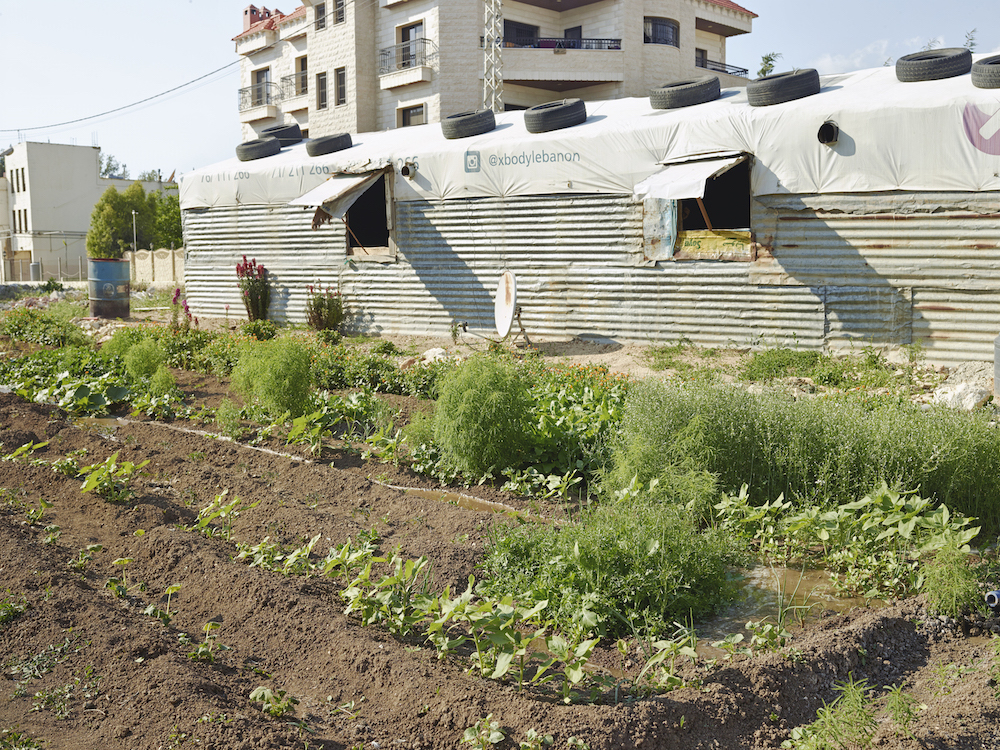
III
Khaldi Amghalid fled from Syria to Lebanon in 2013 with her husband and seven children. The family rented a plot of land near the town of Bar Elias in the Beqaa Valley. Amghalid has planted a large vegetable garden next to their corrugated tin shack. She and her children take care of the garden. It gives them great satisfaction to be able to eat produce from their own small plot of land. The snapdragon is her favourite flower. It comes back every year and blooms for a long time. Amghalid dreams of being able to work again someday in her garden back home in Syria. But she realizes that it might be a long while before this can happen, as her house and all everything around it was destroyed. Their shelter in the Beqaa Valley lies only twenty kilometers away from their ruined home and garden in Syria.
IV
At one point, I discovered a place that was a veritable oasis of colour. There were so many flowering plants that I thought I had stumbled on a florist’s shop. On enquiry, I learned that these sea of flowers were the property of Walid Mehre. He assured me that the plants were not for sale, but he occasionally gave them as presents to his neighbours. Walid told me that he loves his plants as though they were his children. Flowering plants are the most beautiful thing in the world, he explained. Every morning, he drinks tea in the garden with his wife. Then spends the morning caring for his plants, watering them and pruning them wherever necessary. Walid speaks to his plants. They seem to answer him too. The cultivation of plants is, he feels, vital to his mental survival. He needs a distraction to help him forget all the misery for a while. The sheer quantity of plants he has around him betrays the horrors of the past from which he has escaped. When I asked what his favourite flower was, he brought out two gardenias from his tent; he kept them inside because they cannot thrive in direct sunlight. I can see his eyes light up a bit whenever he talks about his plants, after which he quickly resumes the downcast gaze of a severely traumatized man.
After my visit to the Beqaa Valley, I told Walid’s story to a Lebanese friend from Beirut. He was familiar with that love of flowers. During the civil war that raged in Lebanon from 1975 to 1990, a flower was a symbol of hope to many people. Once the dust settled in Beirut after a heavy bombardment, the baker would be the first to open his doors again; the second was the florist.
CANARY AT ZAATARI CAMP, JORDAN — APRIL 2018
V
Grandma Hayat Abou Jabá has been living with her family for over two years in the Beqaa Valley, Lebanon. At home in Syria, she had a garden with many flowers and other plants. When the war came too close, she fled with her children and grandchildren, sadly leaving the garden behind. As soon as the family found a place to build a temporary dwelling, Hayat began cultivating new plants. It soon became her daily routine. Geraniums in pots now flourish in her “front room”, while roses put on a colourful display outside. Grandma Hayat’s plants play an important part in binding the family together, her daughter told me. The pleasant atmosphere created by the greenery in the front room has made it into a central place where family and friends can gather and relax. In the few years she has been in the Beqaa, Hayat has sprouted so many cuttings that she can give many away. Her plants are now spreading among her family and neighbours. Hayat does this for her own pleasure, her daughter said. An amaryllis is growing in the soil outside. It is known as a “wedding plant”, she told me, because two flowers grow on each stem.
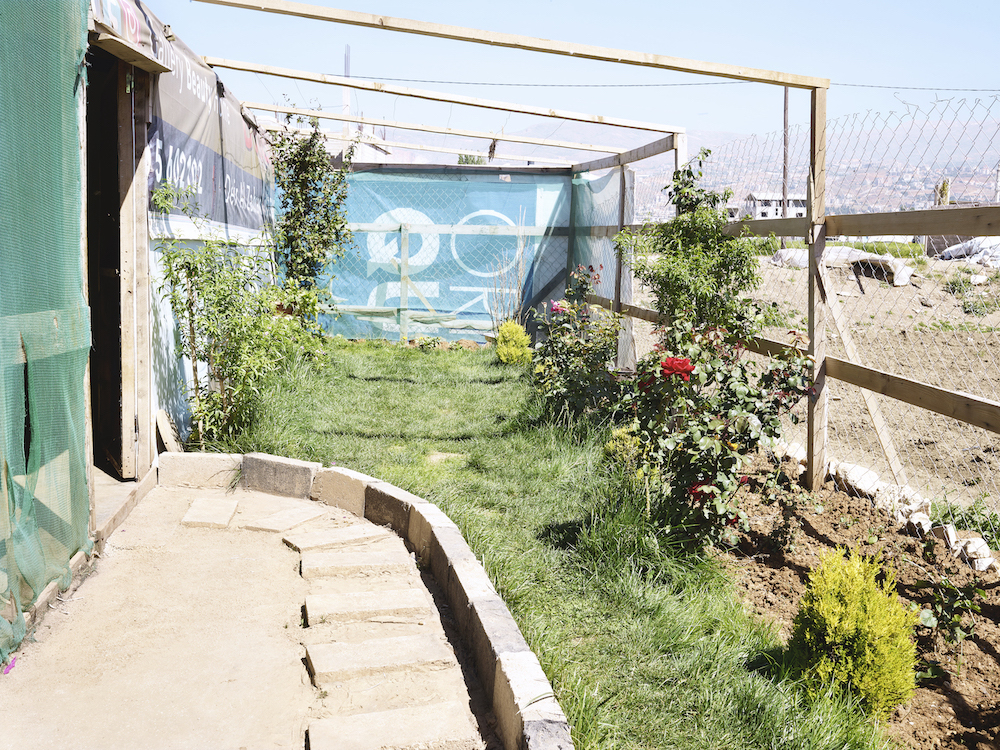
VI
Ahmed Sailm Ahmed has a grass lawn next to his dwelling. It was surprising because this was the first time I had seen a lawn growing in a refugee camp. Ahmed described the envious glances of neighbours who would have liked a lawn of their own. He prefers a lawn to bedding or pot plants because you can sit there in order to enjoy it. And enjoy it he does. Every morning at sunrise, he takes breakfast on the lawn with his family. He mows the lawn every two weeks using a mower borrowed from a farmer in the vicinity. The smell of newly mown grass takes him back to his past in Homs. When mowing, he feels somehow closer to home, to the large lawn alongside his house. But returning to that house and lawn in Homs is impossible. Everything has been destroyed.
BEETROOT. CALAIS, FRANCE — OCTOBER 2016 The beetroot (Beta vulgaris subsp. vulgaris) originally grew in countries around the Mediterranean Sea, in Asia, and along the coasts of Europe. The Romans probably brought beet plants to Northern Europe. Centuries of cultivation have led to several edible varieties including the red beet with its plump red root and edible green leaves known as chard.
VII
The mainly Sudanese camp dwellers in Choucha bought seedlings in nearby villages and planted them in the desert sand of the camp. They used an ingenious system for irrigating their plants. Plastic water bottles would be filled with a mix of sand and water and thrust upside-down into the soil, so as to gradually dispense the moisture the plants needed to survive in the desert heat. They told me that it was a technique that they had learned in their Sudanese homeland. Many of the men I met in the camp had fled in the preceding years from Darfur, a province inhabited principally by nomadic tribes. The bottles visible in the photo were not made in Darfur, however. I saw these in the Beqaa Valley in Lebanon. Ahmad devised the system together with his son. They cut a hole in the base of a plastic bottle and then attached the neck of another bottle with glue, resulting in a drip watering system. Ahmad also has several other ideas for ways of using empty bottles to make irrigation systems.
LIME TREE. ZAATARI CAMP, JORDAN — APRIL 2018 Citrus aurantifolia or the lime-tree originated in south-east Asia and then spread throughout the Mediterranean region. It can grow from six to seven metres tall.
VIII
Abu Hamzi and his family fled the horrors of the war in Syria and arrived at the Zaatari refugee camp in Jordan in 2013. Abu had worked as a horticulturist in Damascus and specialized in the shaping of shrubs. He has planted a beautiful garden with flowers and lots of succulents that do well in the dry ground around his shelter in the camp. When he feels stressed, he goes into his garden. Its beauty relaxes him, he says, and caring for the garden is good for his soul. A few weeks ago he discovered a peach sprouting in the back of his garden, presumably growing from a discarded pit. Abu put crates over the young sapling “to protect it from the kids, who yank everything out of the ground if you don’t watch out.” He is hoping it will grow into a nice big tree, because that will give him shade and fruit.
PEAS. CALAIS, FRANCE — JULY 2016 Peas are among the many legumes (chickpeas, lentils, broad beans, etc.) that have been cultivated around the Mediterranean Sea since prehistoric times. They are still a crucial part of everyday cuisine in many cultures. Today’s green “garden peas” are mostly of the species Pisum sativum. These climbing plants easily reach 150 cm in height. Peas, broad beans, and several other legumes do equally well in colder climates such as northern Europe.
IX
The white rose is the favorite flower of Meriam, who comes from Aleppo. She sees each opening flower bud as a newborn baby. “It’s lovely to see a new little rose smiling at you when you get up in the morning,” she told me. It is also a joy for her to come back home and see the well cared for garden after a day’s hard work outdoors. “Growing roses in the Beqaa Valley is harder than in Syria,” Meriam said. Here, she could not get more than four roses to bloom on each plant. Perhaps it was because the Syrian soil was better for roses; that is after all her home soil, she said. In Syria, at least twelve roses would bloom on one plant.
